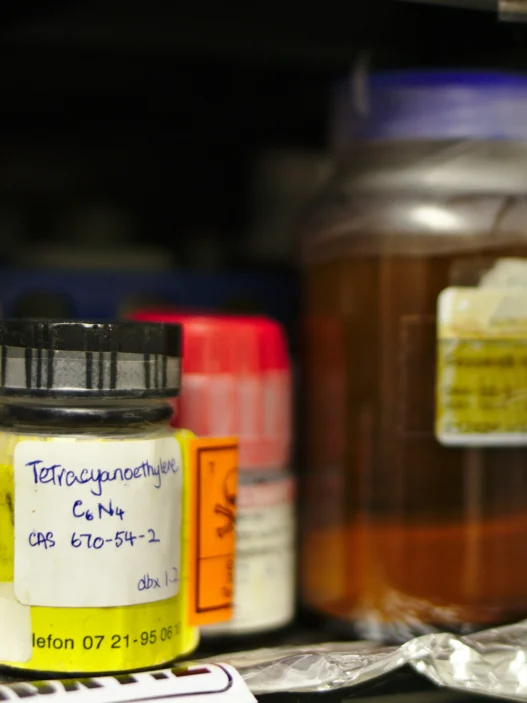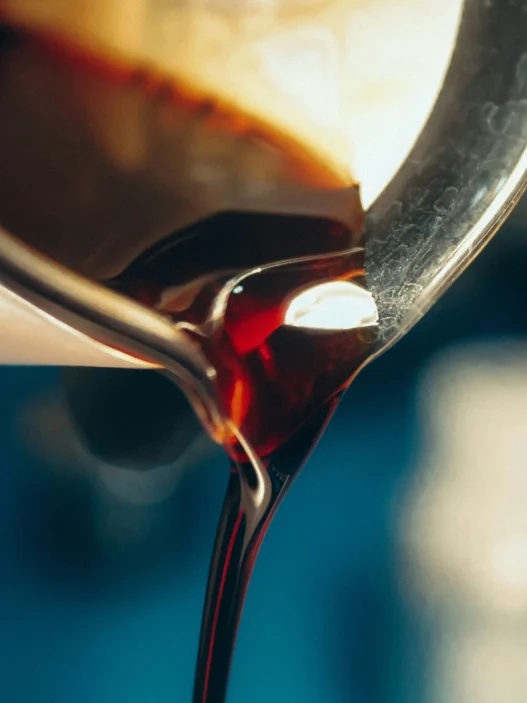8-Aminoquinoline is a compound that has various applications in everyday life. It is commonly used in the pharmaceutical industry as a precursor for the synthesis of antimalarial drugs such as chloroquine and primaquine. These drugs are crucial for the treatment and prevention of malaria, a life-threatening disease that affects millions of people worldwide. Additionally, 8-Aminoquinoline is used in the production of dyes, pesticides, and organic synthesis processes. Its versatility and importance in various industries make it a valuable compound with significant relevance to everyday life.
Table of Contents:
- 💡 Commercial Applications
- ⚗️ Chemical & Physical Properties
- 🏭 Production & Procurement
- ⚠️ Safety Considerations
- 🔬 Potential Research Directions
- 🧪 Related Compounds
💡 Commercial Applications
8-Aminoquinoline, commonly known as 8-AQ, has several commercial and industrial applications. It is commonly used as an intermediate in the production of dyes, pigments, and pharmaceuticals due to its versatile chemical properties. Additionally, 8-AQ is utilized in the synthesis of pesticides and anti-malarial drugs, making it a crucial compound in various industries.
In the realm of drug and medication applications, 8-Aminoquinoline plays a significant role as an anti-malarial agent. It is a key component in the development of drugs such as primaquine, which is used in the treatment and prevention of malaria. Furthermore, 8-AQ has shown promise in cancer research, with studies suggesting its potential as a chemotherapeutic agent against certain types of cancer cells. Its pharmacological properties make it a valuable compound in the field of medicine.
The utilization of 8-Aminoquinoline extends beyond its commercial and industrial applications into the pharmaceutical industry. This compound has been studied for its potential antiviral properties against infectious diseases such as HIV and hepatitis, showcasing its versatility in various therapeutic areas. Additionally, 8-AQ has demonstrated anti-inflammatory effects, suggesting its potential applications in treating inflammatory conditions. Its multifaceted properties make it a valuable compound in pharmaceutical research and development.
⚗️ Chemical & Physical Properties
8-Aminoquinoline is a colorless to yellow solid with no distinctive odor. It is a chemical compound used in various industrial applications, including pharmaceuticals and dyes.
The molar mass of 8-Aminoquinoline is approximately 144.17 g/mol, and its density is around 1.23 g/cm3. This places it in the range of common food items such as sugar (molar mass: 342.3 g/mol, density: 1.59 g/cm3) and salt (molar mass: 58.44 g/mol, density: 2.16 g/cm3).
The melting point of 8-Aminoquinoline is approximately 70-72°C, while its boiling point is around 252-254°C. These values are higher compared to common food items like butter (melting point: 32-35°C, boiling point: 150-180°C) and water (melting point: 0°C, boiling point: 100°C).
8-Aminoquinoline is sparingly soluble in water and has a low viscosity. This contrasts with common food items like sugar (high solubility in water) and honey (high viscosity).
🏭 Production & Procurement
8-Aminoquinoline is a compound that can be produced through various synthetic methods. One common way to synthesize 8-Aminoquinoline is through the reaction of aniline and diethyl ethoxymethylenemalonate, followed by cyclization and subsequent reduction steps.
Once produced, 8-Aminoquinoline can be procured from chemical suppliers or manufacturers specializing in pharmaceutical intermediates. It is generally available in both liquid and solid forms, depending on the specific requirements of the end user. Care should be taken during transportation to avoid exposure to moisture or extreme temperatures, as this may impact the stability and quality of the compound.
In order to ensure the safe transportation of 8-Aminoquinoline, it is generally packaged in accordance with regulatory requirements for hazardous materials. This may include using specialized containers or drums, as well as providing appropriate labeling and documentation for handling. Transport of the compound should be carried out by trained professionals following proper safety protocols to mitigate any risks associated with its handling.
⚠️ Safety Considerations
Safety considerations for 8-Aminoquinoline include its potential to cause skin and eye irritation upon contact. It is also considered harmful if swallowed, inhaled, or absorbed through the skin. Proper personal protective equipment, such as gloves and goggles, should be worn when handling this substance to prevent accidental exposure. Additionally, it is important to work in a well-ventilated area to minimize the risk of inhalation.
Hazard statements for 8-Aminoquinoline include “Causes skin and eye irritation” and “Harmful if swallowed, inhaled or absorbed through the skin.” These statements indicate the potential dangers associated with exposure to this chemical. It is important to take precautions to avoid contact with the skin, eyes, and respiratory system when handling this substance to prevent adverse health effects.
Precautionary statements for 8-Aminoquinoline include “Wear protective gloves/eye protection/face protection” and “Use only outdoors or in a well-ventilated area.” These statements emphasize the importance of using appropriate personal protective equipment and working in a safe environment when handling this chemical. Following these precautions can help minimize the risk of exposure and prevent accidents while working with 8-Aminoquinoline.
🔬 Potential Research Directions
One potential research direction for 8-Aminoquinoline is its potential as an antimalarial agent. Given its structural similarity to chloroquine, which is used to treat malaria, 8-Aminoquinoline could be studied for its efficacy against different strains of the malaria parasite.
Another promising area of research is investigating the immunomodulatory effects of 8-Aminoquinoline. By understanding how this compound interacts with the immune system, researchers may uncover potential applications in treating autoimmune diseases or enhancing immune responses to infections.
Additionally, the potential anti-cancer properties of 8-Aminoquinoline warrant further exploration. Studies have shown that this compound exhibits cytotoxic effects on various cancer cell lines, suggesting its potential as a novel chemotherapeutic agent. Further research could focus on elucidating the mechanisms behind its anti-cancer activity.
Moreover, the neuroprotective effects of 8-Aminoquinoline present an intriguing avenue for research. Studies have demonstrated that this compound can protect against neurodegeneration in animal models of diseases such as Parkinson’s and Alzheimer’s. Investigating the underlying mechanisms could lead to the development of new therapeutics for neurodegenerative disorders.
🧪 Related Compounds
One similar compound to 8-Aminoquinoline is 5-Chloro-8-aminoquinoline. This compound features a similar structure to 8-Aminoquinoline, with chlorine substituting one of the hydrogen atoms on the quinoline ring. This substitution can affect the compound’s chemical properties and biological activity.
Another compound with a molecular structure similar to 8-Aminoquinoline is 8-Hydroxyquinoline. In this compound, a hydroxyl group is present at the 8-position on the quinoline ring instead of an amino group. This substitution can lead to differences in the compound’s reactivity and potential applications.
Additionally, 8-Methylaminoquinoline is another compound with a structure akin to 8-Aminoquinoline. In this compound, a methylamino group replaces the amino group at the 8-position on the quinoline ring. This substitution can impact the compound’s interactions with other molecules and its biological effects.





